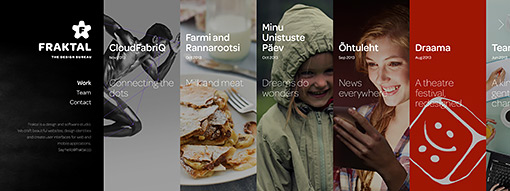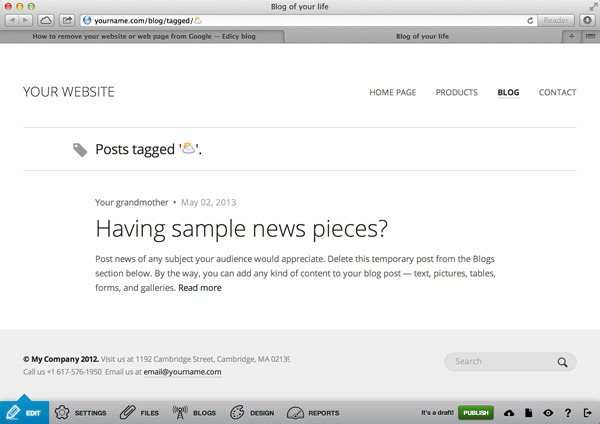Faster and more reliable serversSep 16, 2014


Our ecosystem has expanded significantly over the last couple of years. Thousands of exceptional custom websites have been built on Edicy. Most of them are crafted by our partners and freelancers from around the world.
One of the most requested features by a swarm of web developers has been the ability to alter the looks and components of individual pages and blog posts. For example to give each blog post a unique thumbnail or cover image. Or apply a different background image for any of the pages on a site.

Today we are happy to announce that this major update — custom data fields — has been released and available on all paid accounts. You can now bind any kind of data not only to entire site but also for each page or blog post separately.

The scope of possibilities is huge — unique background colors, Facebook post images and other OG-tags, text attributes, icons for menu items, configurable widgets like distance / price / tax calculators or Flickr galleries, page layout modulators etc. Go ahead, read our renewed API for more or jump straight to the examples. Feel free to contact us via support@edicy.com. We'd be really happy to help you get new flexible customer websites up and running.


 From now on, every person added to your site will be in editor role by default. To change one's role, just click on "Edit" link next to the person's card in the people screen and click on "Make account owner" link on the right-hand side of person's edit screen.
From now on, every person added to your site will be in editor role by default. To change one's role, just click on "Edit" link next to the person's card in the people screen and click on "Make account owner" link on the right-hand side of person's edit screen.
Life behind the simplest web creation tool